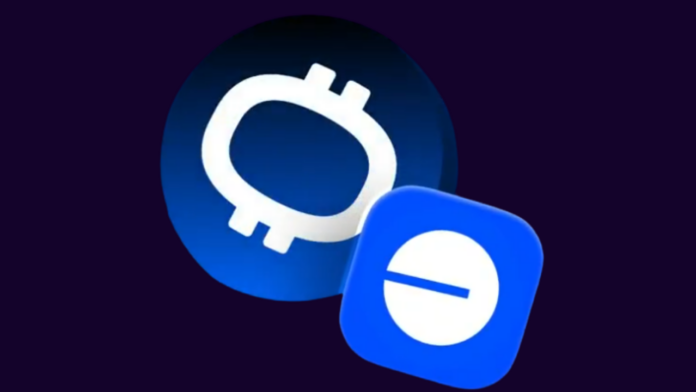Base has found a new home on Oisy, and it’s keeping things clean, quick, and entirely on-chain. The arrival means users can now manage, send, and swap Base-native assets without the faff—no downloads, no plug-ins, no middle steps. It’s all there, in-browser, and in full user control.
The addition signals a quiet but firm shift in how decentralised finance is approached by platforms that take self-custody seriously. Oisy has long positioned itself as a tool that trims the fluff from DeFi interactions, and with Base integrated, that promise just got sharper. The pitch is simple: use Base without the baggage. Everything lives on-chain, where it should be, with no background scripts or phantom sign-ins taking hold of the user’s session.
For those still getting to know it, Base is the Ethereum Layer 2 incubated by Coinbase. It aims to bring fast, cheap, and secure transactions to a wider user base while staying tethered to Ethereum’s core ideals. Its arrival on Oisy makes that offer more accessible, especially for users who favour browser-based workflows and don’t want to install software just to send or swap tokens.
This new setup opens up some practical perks for Base users. It means funds can be managed without jumping through KYC hoops or installing obscure wallet extensions. As long as a wallet connects, the user’s assets are in play. The experience remains fluid, with Oisy’s UI doing the heavy lifting in the background.
What makes the match worth watching is how little friction exists. Oisy users familiar with Ethereum-based networks will already feel at home here. The design keeps things direct—users pick an asset, select an action, and the job is done. Everything transacts on-chain, with transparency, and with full user-side control. No bridging, no switching interfaces, no buried fees.
The Base-Oisy combo could well serve as a quiet template for how browser-first DeFi could function when done with user autonomy front and centre. Both platforms favour protocol over platform, meaning users aren’t locked into a specific interface or asked to trust third parties they never meet. What you see is what’s happening on-chain.
It’s not just about simplicity, though. The security logic is built in. Because Oisy doesn’t operate with backend servers and doesn’t require app-level access to wallets, there’s less surface for bad actors to exploit. That matters especially in a space still prone to phishing, fake extensions, and copycat front-ends. With Base now available, users benefit from that protection while using a network known for speed and low cost.
This aligns with the growing preference in crypto circles for “no download” decentralisation. There’s increasing fatigue with bloated apps, wallets that act like browsers, and sign-in flows that resemble banking portals. By skipping all of that, Oisy leans into what decentralised tools originally aimed to be: lightweight, permissionless, and governed by public infrastructure.
Base fits into this approach naturally. Built to scale Ethereum applications, Base benefits from the security and openness of the Ethereum mainnet but doesn’t get weighed down by its network fees. On Oisy, this plays out in a way that users can feel directly—sending or swapping tokens without delay, without wondering where gas fees disappear, and without giving up control to some intermediary server.
The move comes at a time when more users are demanding transparency, especially in how DeFi tools function under the hood. There’s been no shortage of announcements about integrations across chains, but many come with catch-alls—new browser extensions, wrapped tokens, custodial mechanics. The Base-on-Oisy update goes the opposite way. The chain connects, the asset appears, and the interaction happens where it always should have: on-chain and in the user’s hands.
It’s this kind of setup that appeals to power users who’ve grown wary of promises that don’t match UX. There’s no waiting room here—if Base is live, it’s live, and the experience starts immediately. With everything visible on-chain, from asset balances to contract execution, it strips away the guesswork. This is a useful counterweight to dApps that look sleek but run most of their operations off-chain or behind APIs.
From Oisy’s end, the move reinforces its status as a chain-agnostic interface built on-chain-first values. No data is harvested, no identities stored, and no tokens are trapped in layers of approvals. Each Base transaction processed through Oisy still respects the smart contract permissions it was designed with—if a wallet doesn’t sign, nothing moves.
The addition also comes with subtle improvements to the user experience. Swaps between Base-native assets happen in the same tab, using the same streamlined process that Oisy’s built its design around. There’s nothing reinvented here, and that’s the point. The best tools don’t need tutorials, just a clear runway and reliable output.
It’s easy to overlook these small changes in a space that often runs on announcements louder than substance. But they add up. A frictionless on-chain experience that works straight from the browser, without shortcuts or opacity, has long been the ask in decentralised finance circles. This release answers that without fanfare.
There’s no hidden roadmap here either. It’s already working. The base assets are available. Swaps are live. Wallets connect and go. And as with the rest of Oisy’s features, there’s no vendor lock-in. Users can opt out just as easily as they opted in—no exports, no migration, no mess.
For developers building with Base, the move could act as a signal to support more in-browser tools. If users can access and transact without installations or scripts, projects don’t need to build around complicated onboarding systems. They can assume users are ready to go from the minute their wallet loads. That changes how dApps can be imagined—lighter, quicker, easier to launch and to maintain.
What’s more, this kind of integration rewards users for showing up with nothing but their wallet. There’s a purity in that, and in the context of Base’s ambitions to scale Ethereum activity without gatekeeping, it hits the mark. There are no reward schemes, no sign-up bonuses, no opt-in requirements. It’s just available now, for anyone who wants to use it.
The Base-Oisy integration is unlikely to grab headlines the same way token launches or governance wars do, but it might prove more enduring. It adds a brick to a growing path of user-first tools that don’t ask for trust, don’t push updates, and don’t reroute autonomy. Users decide when to interact and when to leave, and every step is visible on-chain.
For anyone looking to use Base in its cleanest, least-obstructed form, this is a good place to start. Everything is where you expect it to be, and nowhere else. No plug-ins, no data trails, and no interference.


